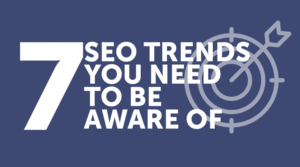4 Reasons Your Site Doesn’t Convert (And How to Fix Them)

“SEO gets ’em there and content keeps ’em there”, is the rule of thumb I often tell people when it comes to making any company’s website successful. SEO works well for helping your site rank, and simply because you rank highly and have more exposure, you will receive more conversions at your website. However, two undesirable scenarios may happen even though you rank highly:
- Your site doesn’t convert well enough to outpace the costs of SEO
- You feel your site could convert much better than it does
Why Doesn’t Your Site Convert as Well as You had Hoped?
Even though your site doesn’t convert as well as you had been hoping, the fact remains that you can make many adjustments to your site in order to increase its conversion rate. There are actually a number of reasons sites don’t convert, including a non-user-friendly design, long load time, and a host of other issues. Since my specialty lies in developing copy, I’ll discuss why your site doesn’t convert because of copy errors.
Title & META Description Focuses Too Much on SEO
The first step in any organic search funnel is the title and META description tags that appear in the search engine results pages. To effectively convert, your site’s title must contain benefits (not features) people can expect to find at your site. “FREE” appears often in titles that convert well, but yours might also include a killer price, an awesome ROI, or a great guarantee like “or your money back.” That kind of talk garners attention.
In your META description, include the target keyword, but elaborate on the benefits-oriented title, while using action-oriented language. For example, “Explore our website and find the fastest, quietest widgets in the industry,” works much better than, “Fast, quiet widgets of all shapes and sizes.”
Your Landing Page Copy Doesn’t Engage
When discussing organic search, this is usually your home page or one of several of your site’s most important pages. If you’ve done a good job with the title and META description, your next job is to capture the attention of your site’s visitors right away in that first paragraph.
Always lead with the strongest benefit you offer, while using that action-oriented language from before. Keep your paragraphs around 5-7 MS Word lines long and use bullets and subheads regularly. You should use longer copy, as that results in more qualified leads and better conversion rates. Keywords are important, but fit them in after you’ve written your copy. Quality/user experience converts better than search engine optimization.
Calls-to-Action Don’t Exist or Aren’t Compelling
People are much more likely to take the action you want if you tell them which one to take, even if it seems obvious what they should do next. If you have calls-to-action, evaluate yours for power. An example of a boring call-to-action is “We can’t wait to speak to you, call us now!”
It’s boring to your target market because it doesn’t tell them what’s in it for them. Instead, try something like, “To receive your indestructible widget and FREE shipping, call us now at 555-555-5555!” Ahhh, now people see the benefits you are offering them, and they will find it much more attractive to take your desired action.
You Haven’t Performed Testing or Research
I can’t tell you how many times I’ve been surprised by what converts best when writing copy.
To find the most effective copy for your site, you have to test everything, even if it seems obvious that a particular set of words or your offer works well. Every site is different, and the web changes quickly, so make sure you test everything, even things as little as the order of the words in your landing page’s H1 tag.
This is by no means a complete list of everything that hurts the effectiveness of your copy, but it covers some of the most common and major ones. Which of these do you think would be helpful to test first for your site?
Image © esignn – Fotolia.com
 SEO is Evolving: Trend You Need to Know About [Infographic]
SEO is Evolving: Trend You Need to Know About [Infographic] 5 Conversion Rate Optimization Tips All Bloggers Should Know
5 Conversion Rate Optimization Tips All Bloggers Should Know How SEO Services Can Help Increase Your Website Traffic
How SEO Services Can Help Increase Your Website Traffic The Impatient Newbie’s Guide to SEO
The Impatient Newbie’s Guide to SEO
{ 19 Responses }